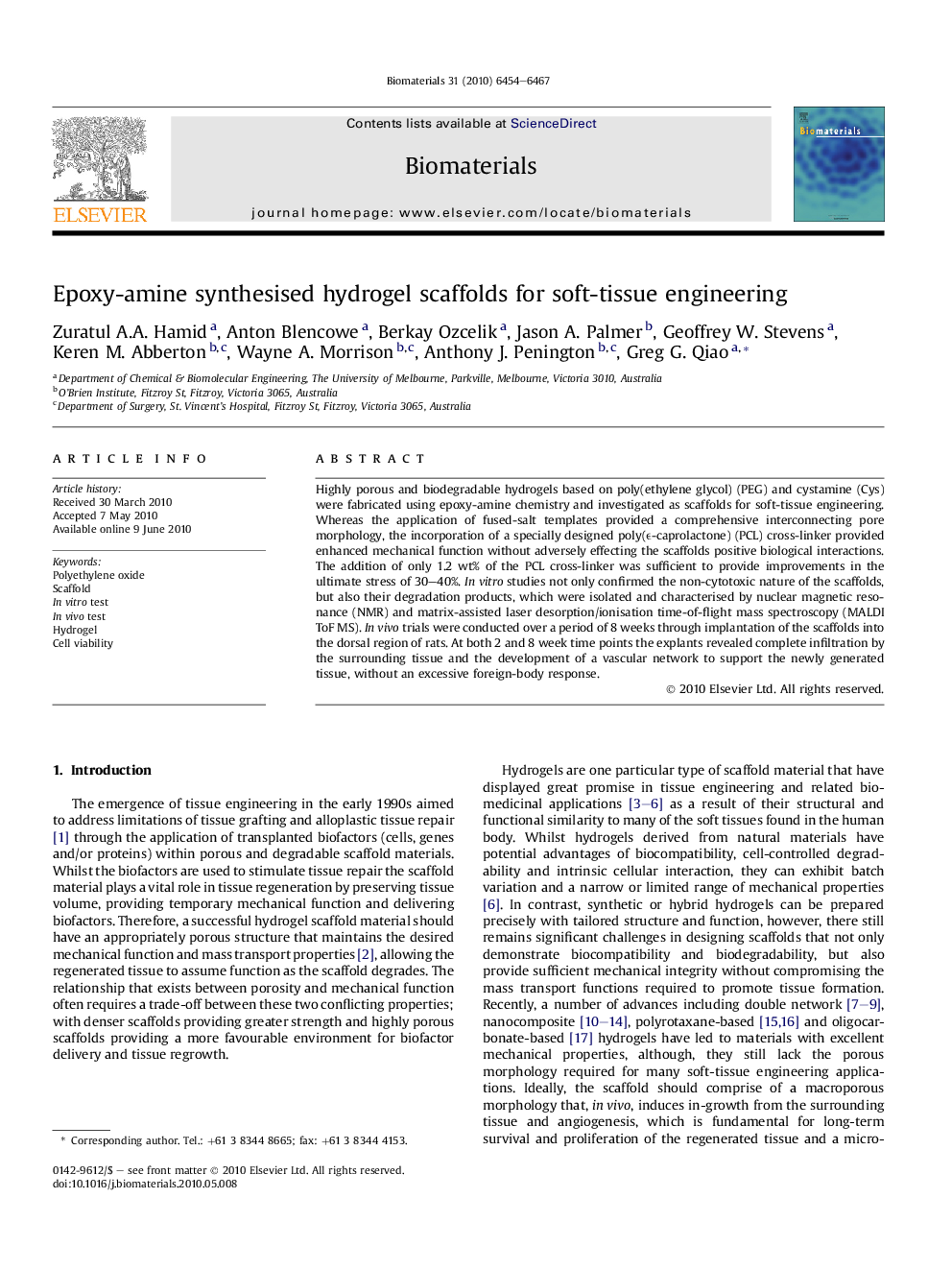| Article ID | Journal | Published Year | Pages | File Type |
|---|---|---|---|---|
| 9146 | Biomaterials | 2010 | 14 Pages |
Highly porous and biodegradable hydrogels based on poly(ethylene glycol) (PEG) and cystamine (Cys) were fabricated using epoxy-amine chemistry and investigated as scaffolds for soft-tissue engineering. Whereas the application of fused-salt templates provided a comprehensive interconnecting pore morphology, the incorporation of a specially designed poly(ε-caprolactone) (PCL) cross-linker provided enhanced mechanical function without adversely effecting the scaffolds positive biological interactions. The addition of only 1.2 wt% of the PCL cross-linker was sufficient to provide improvements in the ultimate stress of 30–40%. In vitro studies not only confirmed the non-cytotoxic nature of the scaffolds, but also their degradation products, which were isolated and characterised by nuclear magnetic resonance (NMR) and matrix-assisted laser desorption/ionisation time-of-flight mass spectroscopy (MALDI ToF MS). In vivo trials were conducted over a period of 8 weeks through implantation of the scaffolds into the dorsal region of rats. At both 2 and 8 week time points the explants revealed complete infiltration by the surrounding tissue and the development of a vascular network to support the newly generated tissue, without an excessive foreign-body response.
